All AbMole products are for research use only, cannot be used for human consumption.
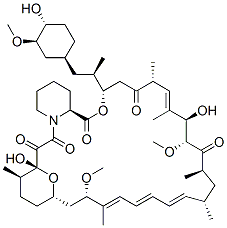
Rapamycin (Sirolimus,Rapamune)is an inhibitor of mTOR.The mammalian target of rapamycin (mTOR) is a kinase responsible for mitogen-induced cell proliferation/survival signaling.In vitro, rapamycin inhibited the proliferation of primary bone marrow cells induced by IL-3, GM-CSF, KL, or a complex mixture of factors present in cell-conditioned media.

Animals and Zoonoses. 2025 Apr 07.
Trichomonas vaginalis inhibits autophagy in VK2/E6E7 cells via the AMPK-ULK1 pathway
Rapamycin purchased from AbMole

Cell Metab. 2024 Oct 18.
Adipocyte-derived glutathione promotes obesity-related breast cancer by regulating the SCARB2-ARF1-mTORC1 complex
Rapamycin purchased from AbMole

Biomed Pharmacother. 2024 Mar;172:116260..
Panax notoginseng saponins stimulates the differentiation and neurite development of C17.2 neural stem cells against OGD/R injuries via mTOR signaling
Rapamycin purchased from AbMole

Mol Carcinog. 2024 Jul 30.
SIRT1 silencing promotes EMT and Crizotinib resistance by regulating autophagy through AMPK/mTOR/S6K signaling pathway in EML4-ALK L1196M and EML4-ALK G1202R mutant non-small cell lung cancer cells
Rapamycin purchased from AbMole

Discover Oncology. 2024 Jun 15.
Lycorine attenuated proliferation and induced apoptosis on imatinib-resistant K562 cell by inhibiting autophagy
Rapamycin purchased from AbMole

Adv Sci (Weinh). 2023 Mar 27;e2207224.
Hypoxia Drives Material‐Induced Heterotopic Bone Formation by Enhancing Osteoclastogenesis via M2/Lipid‐Loaded Macrophage Axis
Rapamycin purchased from AbMole

Metabolism. 2023 Jan 7;140:155398.
Metformin coordinates with mesenchymal cells to promote VEGF-mediated angiogenesis in diabetic wound healing through Akt/mTOR activation
Rapamycin purchased from AbMole

Front Immunol. 2023 Mar 14;14:1120996.
ROS-AMPK/mTOR-dependent enterocyte autophagy is involved in the regulation of Giardia infection-related tight junction protein and nitric oxide levels
Rapamycin purchased from AbMole

Commun Biol. 2023 Apr 3;6(1):361.
WSSV exploits AMPK to activate mTORC2 signaling for proliferation by enhancing aerobic glycolysis
Rapamycin purchased from AbMole

Infect Immun. 2023 Nov 16;91(11):e0010323.
Effects of Trichinella spiralis and its serine protease inhibitors on autophagy of host small intestinal cells
Rapamycin purchased from AbMole

J Orthop Surg Res. 2023 Feb 22;18(1):129.
Osteogenic effects of rapamycin on bone marrow mesenchymal stem cells via inducing autophagy
Rapamycin purchased from AbMole

Arch Oral Biol. 2023 Apr 18;151:105700.
Wrinkled topography regulates osteogenesis via autophagy-mediated Wnt/β-catenin signaling pathway in MC3T3-E1 cells
Rapamycin purchased from AbMole

Mol Cancer. 2022 Mar 18;21(1):77.
Cholesterol promotes EGFR-TKIs resistance in NSCLC by inducing EGFR/Src/Erk/SP1 signaling-mediated ERRα re-expression
Rapamycin purchased from AbMole

J Hepatol. 2022 Nov 9;S0168-8278(22)03285-8.
Hepatocyte-specific Mas activation enhances lipophagy and fatty acid oxidation to protect against acetaminophen-induced hepatotoxicity in mice
Rapamycin purchased from AbMole

Mol Psychiatry. 2022 Jul 15;1-14.
Social isolation reinforces aging-related behavioral inflexibility by promoting neuronal necroptosis in basolateral amygdala
Rapamycin purchased from AbMole

Immunology. 2022 Sep 25.
mTORC1-GLUT1-mediated glucose metabolism drives hyperactivation of B cells in primary Sjogren's syndrome
Rapamycin purchased from AbMole

CNS Neurosci Ther. 2022 Nov 24.
Acupuncture promotes nerve repair through the benign regulation of mTOR-mediated neuronal autophagy in traumatic brain injury rats
Rapamycin purchased from AbMole

Cell Cycle. 2022 Sep 19;1-23.
Mechanistic target of rapamycin (mTOR) regulates self-sustained quiescence, tumor indolence and late clinical metastasis in a Beclin-1-dependent manner.
Rapamycin purchased from AbMole

Exp Cell Res. 2022 Nov 9;422(1):113414.
Gastric cancer-derived mesenchymal stem cells promote gastric cancer cell lines migration by modulating CD276 expression
Rapamycin purchased from AbMole

Oxid Med Cell Longev. 2021 Jun 14;2021:6662225.
Impaired Autophagy Induced by oxLDL/ β 2GPI/anti- β 2GPI Complex through PI3K/AKT/mTOR and eNOS Signaling Pathways Contributes to Endothelial Cell Dysfunction
Rapamycin purchased from AbMole

Int J Case Rep Orthop. 2021;3(2):129-134.
Rapamycin's osteogenic effects on bone marrow mesenchymal stem cells through triggering autophagy
Rapamycin purchased from AbMole

Oncogene. 2020 Apr;39(15):3163-3178.
The EGFR-ZNF263 Signaling Axis Silences SIX3 in Glioblastoma Epigenetically
Rapamycin purchased from AbMole

Cell Commun Signal. 2020 Feb 17;18(1):27.
mTOR May Interact With PARP-1 to Regulate Visible Light-Induced Parthanatos in Photoreceptors
Rapamycin purchased from AbMole

Mol Immunol. 2020 Jan;117:12-19.
Toll-like receptor 4 knockout protects against diabetic-induced imbalance of bone metabolism via autophagic suppression.
Rapamycin purchased from AbMole

Biomed Res Int. 2020 Jun 20;2020:9243681.
Shenmai Injection Supresses Glycolysis and Enhances Cisplatin Cytotoxicity in Cisplatin-Resistant A549/DDP Cells via the AKT-mTOR-c-Myc Signaling Pathway
Rapamycin purchased from AbMole

Genes & Diseases. 2020 Jun.
Metformin ameliorates HMGB1-mediated oxidative stress through mTOR pathway in experimental periodontitis
Rapamycin purchased from AbMole
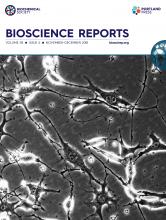
Biosci Rep. 2018 Nov 20;38(6).
Rapamycin attenuates mitochondrial injury and renal tubular cell apoptosis in experimental contrast-induced acute kidney injury in rats.
Rapamycin purchased from AbMole
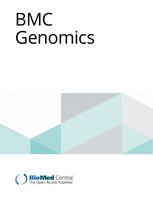
BMC Genomics. 2017 Sep 11;18(1):714.
The dynamic landscape of gene regulation during Bombyx mori oogenesis
Rapamycin purchased from AbMole
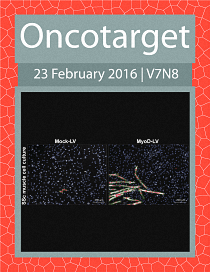
Oncotarget. 2016 Feb 22.
Mechanosensitive caveolin-1 activation-induced PI3K/Akt/mTOR signaling pathway promotes breast cancer motility, invadopodia formation and metastasis in vivo.
Rapamycin purchased from AbMole

Mol Med Rep. 2016 Sep;14(3):2194-8.
Anti‑migratory effect of rapamycin impairs allograft imaging by 18F‑fluorodeoxyglucose‑labeled splenocytes
Rapamycin purchased from AbMole
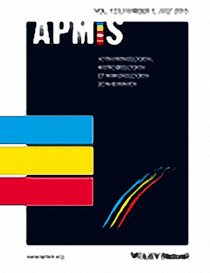
APMIS. 2015 Jul;562-70.
MicroRNA-218 increases cellular sensitivity to Rapamycin via targeting Rictor in cervical cancer.
Rapamycin purchased from AbMole

2015 Apr.
THE MECHANOBIOLOGICAL MECHANISMS OF CAVEOLAE/CAVEOLIN-1 IN LOW SHEAR STRESS-INDUCED BREAST CARCINOMA CELL MIGRATION AND INVASION
Rapamycin purchased from AbMole
| Cell Experiment | |
|---|---|
| Cell lines | HeLa, SiHa, Caski, and C33A cells |
| Preparation method | MTT assay. In brief, 2*103 cells/well were seeded into 96-well plates and routinely cultured overnight. Then, these cells were treated with Rapamycin for 72 h. Next, 5 µL MTT (5 mg/ mL; M7007) and 200 µL DMSO were sequentially added into each well and the absorbance was measured at the wavelength of 570 nm. |
| Concentrations | 0~80nM |
| Incubation time | 72 h |
| Animal Experiment | |
|---|---|
| Animal models | cervical cancer C33A cells tumor bearing mice |
| Formulation | a solution of 0.2%CMC and 0.25% Tween-80 in ddH2O |
| Dosages | 2.5 mg/kg from the 10th day to 37th day |
| Administration | intra-peritoneal injection |
| Molecular Weight | 914.18 |
| Formula | C51H79NO13 |
| CAS Number | 53123-88-9 |
| Solubility (25°C) | DMSO 80 mg/mL |
| Storage |
Powder -20°C 3 years ; 4°C 2 years In solvent -80°C 6 months ; -20°C 1 month |
[3] Zapata G, et al. Ocul Immunol Inflamm. Topical use of rapamycin in herpetic stromal keratitis.
| Related mTOR Products |
|---|
| RMC-4627
RMC-4627 is a selective mTORC1 inhibitor that activates 4EBP1 and inhibits tumor growth. |
| RMC-4529
RMC-4529 has an IC50 value of 1.0 nM against p-4E-BP1-(T37/46) in mTOR kinase cellular assay. |
| WYE-687 dihydrochloride
WYE-687 dihydrochloride is an ATP-competitive mTOR inhibitor with an IC50 of 7 nM. |
| Rapamycin-d3
Rapamycin-d3 |
| L-Leucine-d10
L-Leucine-d10 |
All AbMole products are for research use only, cannot be used for human consumption or veterinary use. We do not provide products or services to individuals. Please comply with the intended use and do not use AbMole products for any other purpose.


Products are for research use only. Not for human use. We do not sell to patients.
© Copyright 2010-2024 AbMole BioScience. All Rights Reserved.
